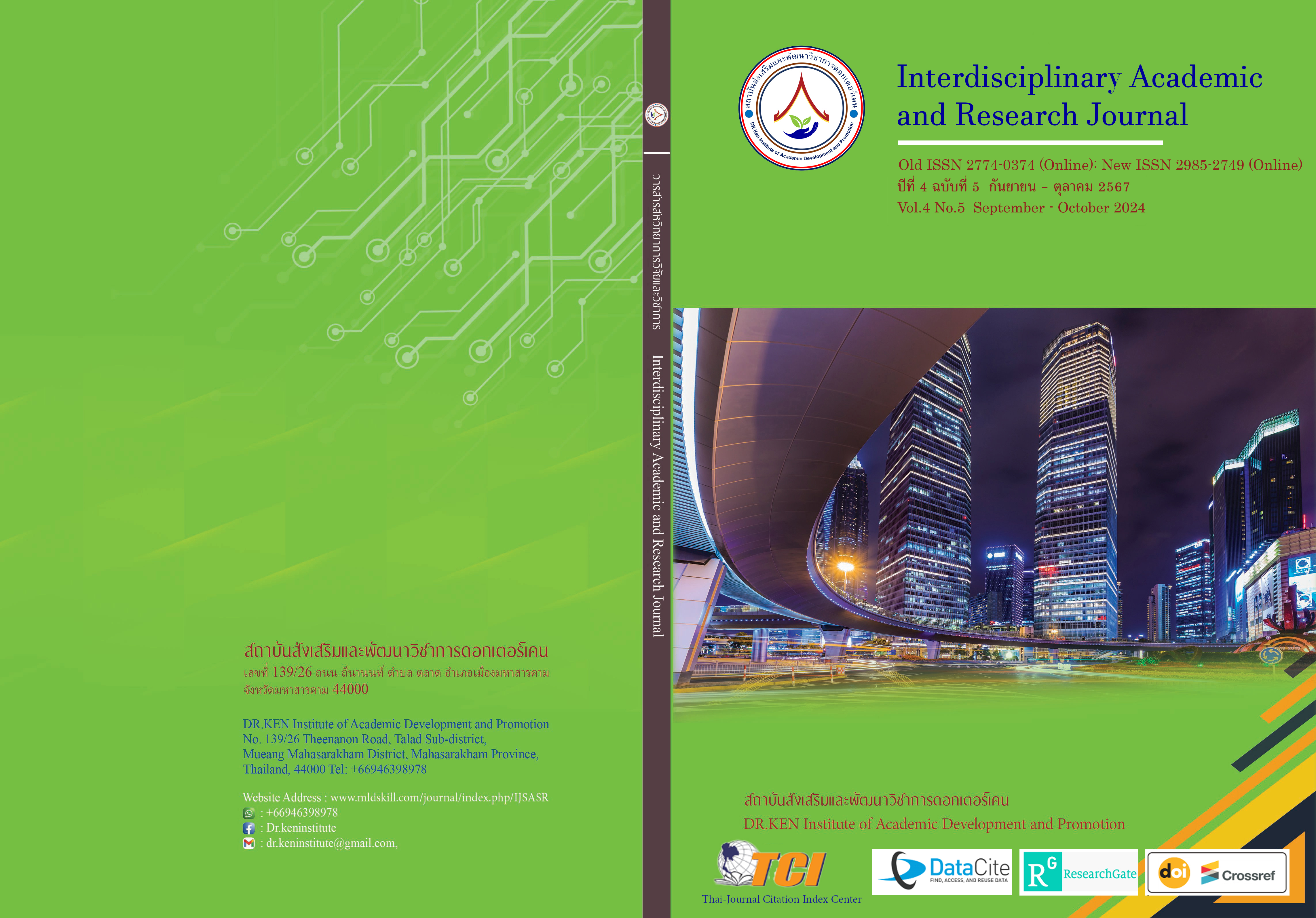Extending the Life of the Rice Noodles with Fang (Caesalpinia sappan L.) Extract to Reduce the Risk of Food Poisoning
DOI:
https://doi.org/10.60027/iarj.2024.277546Keywords:
Life Extension, Rice Noodles, Fang Extract, Caesalpinia sappanAbstract
Background and Aims: Rice Noodles are a risk of poisoning food with added preservatives. If consumers are exposed to preservatives regularly, they will cause negative health effects. Therefore, using Fang extract (Caesalpinia sappan L.) to replace preservatives in rice noodles will help reduce the use of chemical preservatives. This study aims to compare the pH value among rice noodles that contained Fang Extract at concentrations of 3, 6, and 12 grams and compared with those without preservative ingredients, rice noodles with a mixture of preservatives as standard and beyond the standard to extend the life of the noodles.
Methodology: The data were analyzed and compared the concentrations of different Fang Extracts in extending the life of the noodles by using one-way ANOVA analysis and statistical Repeated measures ANOVA.
Results: The results of the study showed that noodles that contained Fang Extract at concentrations of 3, 6, and 12 grams contributed to a change in the pH of the noodles.
Conclusion: The noodles that contain Fang Extract at concentrations of 3, 6, and 12 grams can extend the life of the noodles longer than noodles that do not contain preservatives, especially in a time of 30 hours. Moreover, it can extend the life of the rice noodles is not different from the line of noodles that contain preservatives as standard and beyond the standard.
References
นรินทร์ ท้าวแก่นจันทร์. (2560). การพัฒนาผลิตภัณฑ์ชาสมุนไพรจากฝาง (Development of Herbal Tea from Caesalpinia sappan L). เชียงใหม่: มหาวิทยาลัยแม่โจ้
นฤพร สุทธิสวัสดิ์ และศุทธินี ธไนศวรรยางกูร. (2549). ฤทธิ์กันเสียของฝาง (Caesalpinia sappan L.) ในผลิตภัณฑ์อาหารประเภทน้ำพริก. กรุงเทพฯ: มหาวิทยาลัยมหิดล
รุ่งทิพย์ กาวารี, ภาวีณี อารีศรีสม, นรินทร์ ท้าวอก่นจันทร์(2560). การศึกษาองค์ประกอบทางเคมีของฝาง. เชียงใหม่: มหาวิทยาลัยแม่โจ้
วัชรินทร์รังษี ภาณุรัตน์, พัชรี กัมมารเจษฎากุล, อิสยา จันทร์วิทยานุชิต. (2559). ฤทธิ์ของสารสกัดสมุนไพรไทย 10 ล่าสุดยับยั้งแบคทีเรีย Staphylococcus aureus ATCC 25923, Bacillus cereus และ Escherichia coli ATCC 25922. วารสาร มฉก. การศึกษาวิทยาศาสตร์สุขภาพ. 19 (38), 35-48.
ศิวาพร ศิวเวชช. (2542). การสุขาภิบาลโรงงานอุตสาหกรรมอาหาร. กรุงเทพฯ : ศูนยสงเสริมและฝกอบรมการเกษตรแหงชาติ มหาวิทยาลัยเกษตรศาสตร วิทยาเขตกําแพงแสนนครปฐม
ศิวาพร ศิวเวชช. (2546). วัตถุเจือปนอาหาร เล่ม 1. นครปฐม: โรงพิมพ์ศูนย์ส่งเสริมและฝึกอบรมการเกษตรแห่งชาติ.
อรุณ ชาญชัยเชาว์วิวัฒน์, สถิตย์ พันวิไล, จรัญ ประจันบาล และสมเกียรติ พรพิสุทธิมาศ. (2020). จุลินทรย์ก่อโรคทางเดินอาหารที่สำคัญ. วารสารหน่วยวิจัยวิทยาศาสตร์เทคโนโลยีและสิ่งแวดล้อมเพื่อการเรียนรู้, 11(1), 188-206.
Boonman, N., Chutrtong, J., Wanna, C., Boonsilp, S., Chunchob, S. (2022). Detection of Staphylococcus aureus from contact surfaces of public buses in Bangkok and metropolitan area, Thailand. B I O D I V E R S I T A S. 23 (7), 3395-3400.
Bureau of General Communicable Diseases, Bureau of risk communication and health behavior development, Department of Disease Control. (2020). Department of Disease Control warns people to be careful about 10 dishes during the summer at risk of food poisoning, and recommends sticking to the principle of "cooked, hot, clean". Retrieved on 2020 Jun 18. from: https://ddc.moph.go.th/brc/news.php?news=11907&deptcode=brc
Department of Medical Sciences. (1994). How to consume rice noodles safely? Retrieved on 2019 Aug 6. from: http://www.dmsc.moph.go.th/userfiles/files/Notice/FactSheet_Noodle.pdf
Faculty of Pharmacy, Mahidol University. (2014). Preservative of Fang (Caesalpinia sappan L.). Retrieved on 2019 Oct 1. from: https://www.pharmacy.mahidol.ac.th/newspdf/specialproject/2549-01.pdf
Homhol, S. (2010). Caesalpinia sappan. Retrieved on 2020 July 3, from: https://apps.phar.ubu.ac.th/thaicrudedrug/main.php?action=viewpage&pid=88
Kulsuwan, D. (1994). Influence of the environment. Retrieved on 2020 Jul 7. from: https://www.sites.google.com/site/deunpen601/4-xiththiphl-khxng-sphaph-waedlxm
National Food Institute, Ministry of Industry. (2015). Randomly check the noodles and rice noodles. Retrieved on 2020 July 3, from: https://gnews.apps.go.th/news?news=42554
Rak Khao Yai. (2013). Caesalpinia sappan L. Retrieved on 2020 July 5, from: https://sites.google.com/site/kriengten/smunphir/fang
Rangsipanurat, W. (2016). Effect of 10 Thai herbal extracts on inhibition of bacteria. Staphylococcus aureus ATCC 25923, Bacillus cereus and Escherichea coli ATCC Academic Journal. 35-47.
Suthisawat, N., & Thanaisawarnyangkun, S. (2006). Properties and benefits of the Fang Tree. Retrieved on 2020 Mar 5. from: https://region4.prd.go.th/ewt_news.php?nid=91059&filename=ind
Thai PBS. (2016). Foundation for Consumers found rice noodles in the market with preservatives exceeding the standard - FDA, strong detection, no labeling, fine of 30,000 baht. Retrieved on 2019 October 1, from: https://news.thaipbs.or.th/content/2 50767
Downloads
Published
How to Cite
Issue
Section
License
Copyright (c) 2024 Interdisciplinary Academic and Research Journal

This work is licensed under a Creative Commons Attribution-NonCommercial-NoDerivatives 4.0 International License.
Copyright on any article in the Interdisciplinary Academic and Research Journal is retained by the author(s) under the under the Creative Commons Attribution-NonCommercial-NoDerivatives 4.0 International License. Permission to use text, content, images, etc. of publication. Any user to read, download, copy, distribute, print, search, or link to the full texts of articles, crawl them for indexing, pass them as data to software, or use them for any other lawful purpose. But do not use it for commercial use or with the intent to benefit any business.
















.png)


